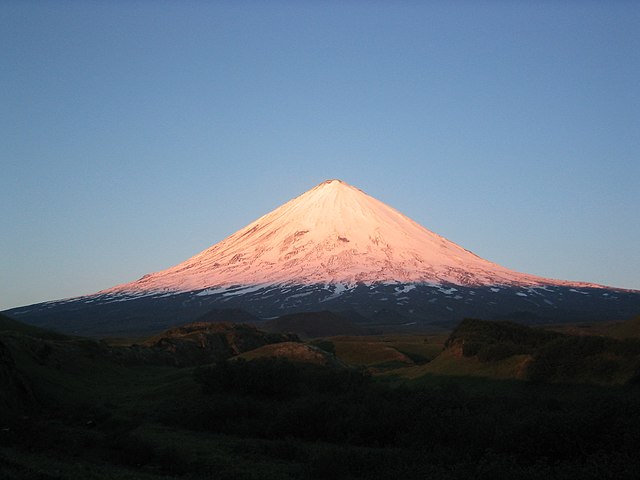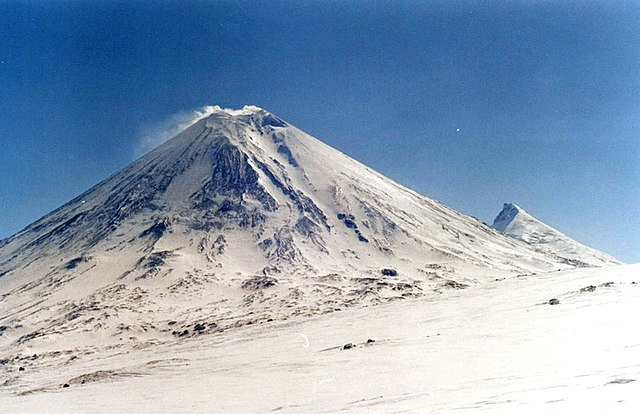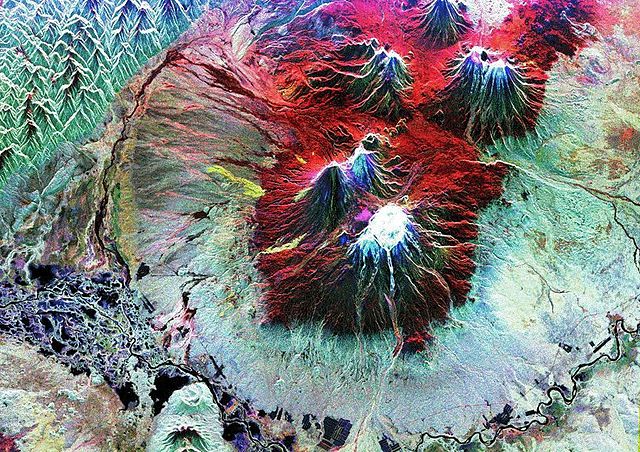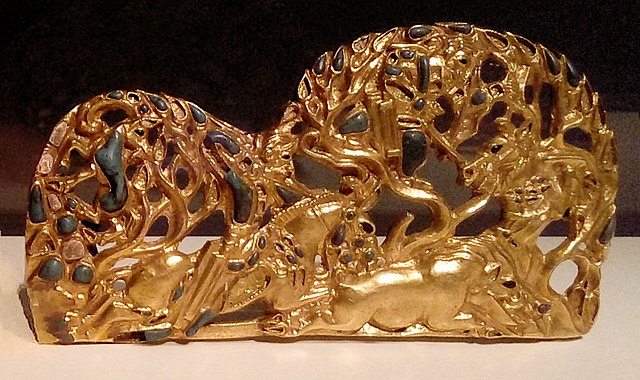Klyuchevskaya Sopka is a stratovolcano, the highest mountain of Siberia and the highest active volcano of Eurasia. Its steep, symmetrical cone towers about 100 kilometres (60 mi) from the Bering Sea. The volcano is part of the natural Volcanoes of Kamchatka UNESCO World Heritage Site. Klyuchevskaya Sopka is ranked 15th in the world by topographic isolation.
Klyuchevskaya Sopka in January 2007
False color image of the October 17, 2013, eruption.
Klyuchevskaya Sopka in July 2006.
Space radar image over SRTM Elevation of Klyuchevskaya Sopka in October 1994.
Siberia is an extensive geographical region comprising all of North Asia, from the Ural Mountains in the west to the Pacific Ocean in the east. It has formed part of the sovereign territory of Russia and its predecessor states since the centuries-long conquest of Siberia, which began with the fall of the Khanate of Sibir in the late 16th century and concluded with the annexation of Chukotka in 1778. Siberia is vast and sparsely populated, covering an area of over 13.1 million square kilometres (5,100,000 sq mi), but home to roughly a quarter of Russia's population. Novosibirsk, Krasnoyarsk, and Omsk are the largest cities in the area.
Horseman hunting, with characteristic Xiongnu horse trappings, southern Siberia, 280–180 BCE. Hermitage Museum.
Chukchi, one of many Indigenous peoples of Siberia. Representation of a Chukchi family by Louis Choris (1816)
Siberian Cossack family in Novosibirsk
View from Haiyrakan mountain, Tuva








